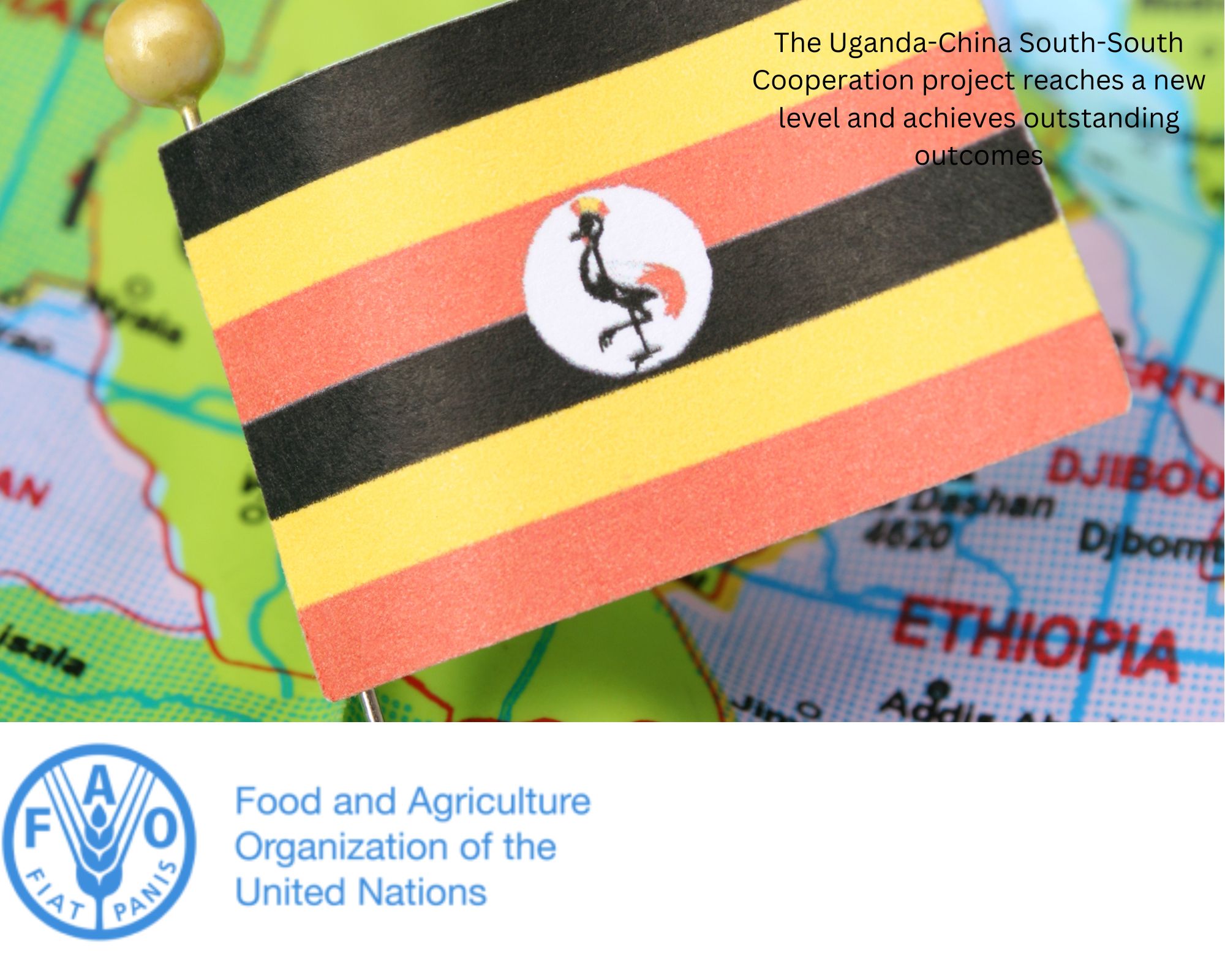Summary:
-
This was part of a very successful South-South Cooperation (SSC) project between China and Uganda, which was backed by the Food and Agriculture Organization of the United Nations (FAO). Following a contract inked in June of this year, Uganda agreed to contribute approximately $10 million to the project during this new, three-year phase.
-
During the first two stages, which were mostly about farming and animal production, rice production per hectare quadrupled and milk production went up in the project areas.
-
Phase III will concentrate on four main areas: creating an integrated technology transfer base; creating high-yielding plans for rice and foxtail millet; supporting livestock improvement programs, and creating aquaculture value chains.
-
China will give nearly $2.4 million for Phase III, and Uganda will also give something.
-
In some of the project locations, milk output increased from 2 to 7 litres per cow per day over the first two phases of the project, a fourfold increase from 2.5 to 10 tonnes of rice produced per acre.
Today, a team of Chinese experts got ready to go to Uganda to help with the implementation of Phase III, which is just getting started. This was part of a very successful South-South Cooperation (SSC) project between China and Uganda, which was backed by the Food and Agriculture Organization of the United Nations (FAO).
Following a contract inked in June of this year, Uganda agreed to contribute approximately $10 million to the project during this new, three-year phase.
One of the most important contributions of its sort has been made by a beneficiary least-developed country for an SSC project to be carried out under the FAO-China SSC Programme. During the first two stages, which were mostly about farming and animal production, rice production per hectare quadrupled and milk production went up in the project areas. This signaled an end to years of low productivity, which impacted the food security and way of life of more than 70% of Ugandans who depend on subsistence farming.
Phase III will focus on four main areas: making an integrated technology transfer base, making high-yield plans for rice and foxtail millet, helping programs to improve livestock, and making aquaculture value chains. China will give nearly $2.4 million for Phase III, and Uganda will also give something.
FAO Deputy Director-General Beth Bechdol said via video at the opening event, “The project in Uganda has taught us several important lessons that will help us make future projects under the FAO-China South-South Cooperation Programme much better.” She pointed out that the support of the governments of China and Uganda has been and will continue to be critical to the project’s success.
Senior representatives from the Chinese Ministry of Agriculture and Rural Affairs (MARA), the Sichuan Provincial Government, and the Ministry of Agriculture, Animal Industry, and Fisheries (MAAIF) of Uganda also spoke at the event before the Chinese experts left.
Impressive outcomes were attained
During the first two phases of the project, milk production went from 2 to 7 liters per cow per day at some of the project sites. This meant that the amount of rice grown per acre went from 2.5 to 10 tons, which is a fourfold increase. Also, growing ricefish, foxtail millet, and mushrooms, as well as making fish, was used to increase aquaculture production and help farmers make more money. The project also helped build the Uganda-China Agro-industrial Park in two districts. The goal of this park is to increase crop and animal production as well as processing so that Uganda and the surrounding area can meet the growing demand for processed agricultural products. The project also prioritized improving value addition and expanding access to agricultural mechanization.
The governments of China, Uganda, and FAO worked together to split the costs of phases I and II. China helped Ugandan farmers improve the ways they grew rice, foxtail millet, maize, grapes, apples, and cherry tomatoes and helped their animals have babies. China also gave money and technical help, such as on-site demonstrations and hands-on training (using goats, pigs, sheep, and fish, for example). While FAO provided technical support and backstopping and oversaw and monitored the project, Uganda helped by giving the visiting specialists a place to stay, transportation, medical care, and health insurance.
The function of FAO in triangular and south-south cooperation
FAO’s South-South and Triangular Cooperation (SSTC) program has made food security better in many countries, mostly by increasing agricultural productivity, crop diversity, small animal and fish production, and rural incomes.
$435 million has been spent on SSTC programs and activities during the previous 20 years.
The FAO-China SSC Program was started in 2009 under the giant SSTC umbrella with a $30 million donation from China. Two additional $50 million pledges were made in 2014 and 2020. Under the program, 25 projects have been done at the national, regional, interregional, and international levels to improve agricultural development and food security. Locally, it has helped more than 100,000 people directly and several hundred thousand indirectly in rural areas.
It is sent out by the Food and Agriculture Organization (FAO), which is part of the APO Group.
APO has issued this press release. The editorial team of AUN News does not monitor the content, and none of the content has been checked or validated by our editors, proofreaders, or fact-checkers. The issuer is solely responsible for the content of this announcement.
Analysis by: Advocacy Unified Network

